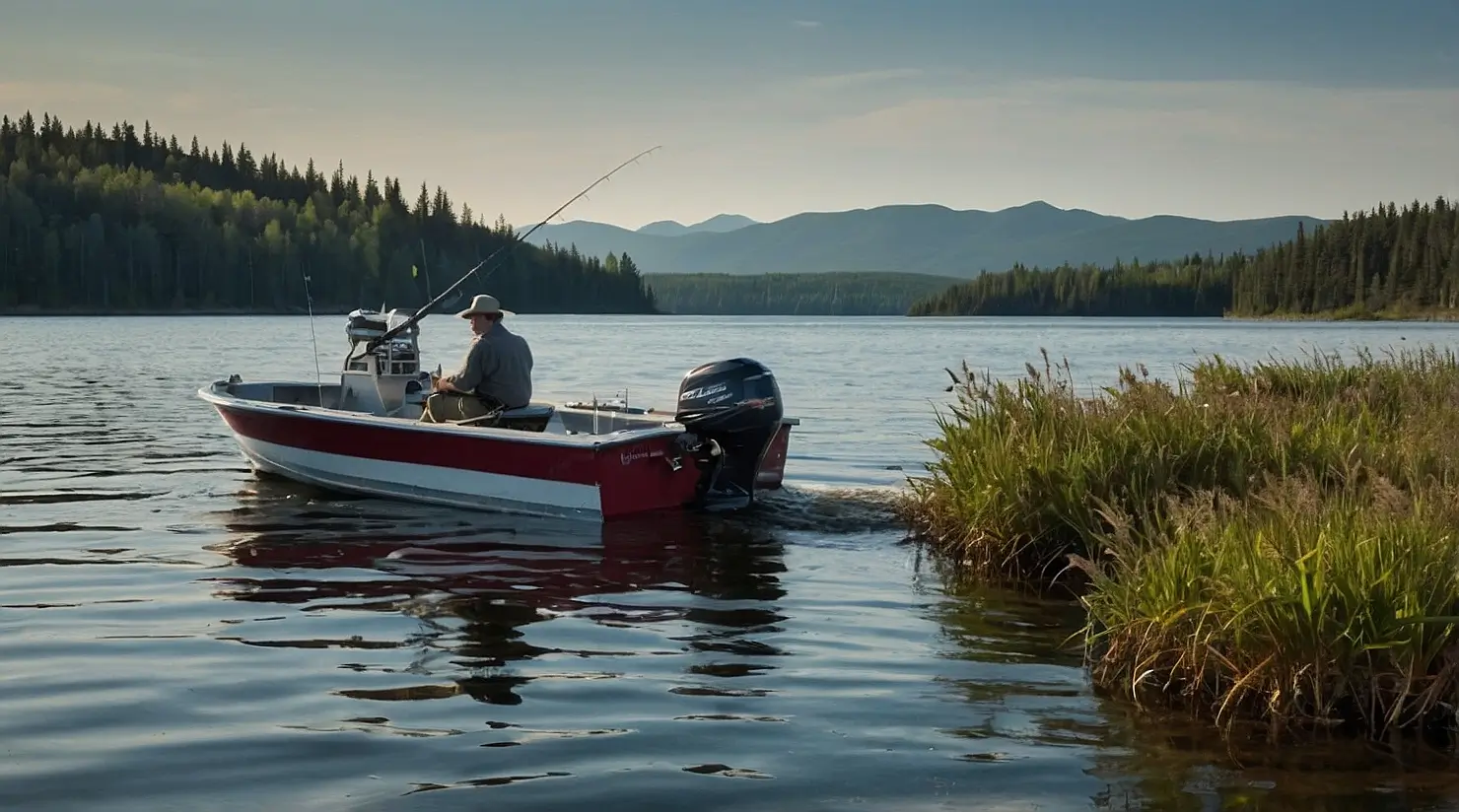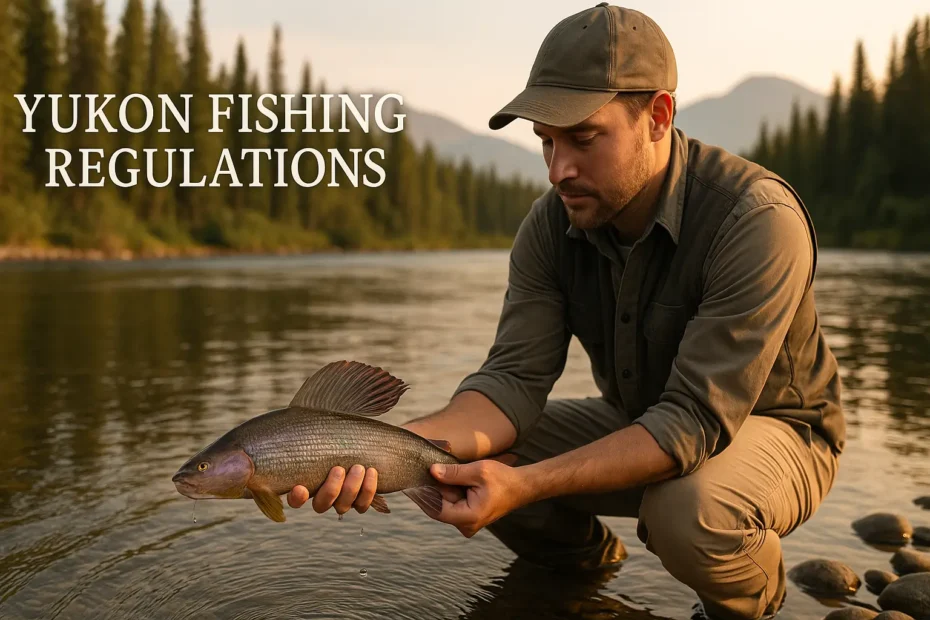The Yukon Fishing Regulations are rules to help protect fish and guide fishing in Yukon. They tell you about licenses, when and where you can fish, and how many fish you can keep.
In a Nutshell: Yukon Fishing Regulations
- You will learn about the key rules for fishing in Yukon.
- You will understand why these rules are important for fish.
- You will find out how to fish responsibly.
Planning a fishing trip in Yukon? It’s a beautiful place to fish. Knowing the Yukon Fishing Regulations helps everyone enjoy fishing and keeps fish populations healthy for years to come.
Estimated reading time: 6 minutes
What are the Yukon Fishing Regulations?
The Yukon Fishing Regulations are a set of rules from the Government of Yukon. These rules help manage fishing in the territory. They aim to keep fish populations healthy.

They also make sure fishing is fair and sustainable. The rules are updated sometimes. This helps address new concerns for fish and their homes. The official Yukon Fishing Regulations Summary has all the details.
Who Needs a Yukon Fishing License?
If you are 16 or older, you need a Yukon fishing license to fish in fresh water. You can buy licenses for the 2025-2026 fishing year. The cost of a license changes. It depends if you live in Yukon or are visiting.
Youth licenses also have different prices. Most licenses are good from April 1 to March 31 of the next year. These rules are part of the Yukon Territory Fishery Regulations C.R.C., c. 854, which provide the legal basis.
Yukon Fishing License Check
When and Where Can You Fish in Yukon?
The fishing season in Yukon usually starts when the ice on lakes and rivers melts. This is often from early spring to late fall. Some fishing spots have specific opening and closing dates. These dates can change depending on the type of fish or the water body.
Sometimes, areas are closed to fishing. This helps protect fish when they are spawning (laying eggs). It also protects their homes. The regulations summary has maps. These maps show fishing zones and any special rules for certain lakes or rivers. For more on fishing seasons, check out seasonal fishing restrictions in Canada.
Common Fish and Rules for Yukon Fishing Regulations
Yukon has many types of freshwater fish. The rules are different for each species. This helps keep their numbers strong.
Some key fish include:
- Salmon (Chinook, sockeye, chum, coho)
- Trout (rainbow trout, lake trout)
- Whitefish
- Inconnu (sheefish)
- Grayling
- Northern pike
Catch Limits:
There are limits on how many fish you can catch in a day. There are also limits on how many you can have in total. These limits can change by area and time of year. For example, rainbow trout limits might be different in various lakes.
Size Limits:
Some fish must be a certain size before you can keep them. This lets young fish grow and lay eggs. Sometimes there are “slot limits.” This means you can keep fish that are smaller or larger than a certain range, but not those in between.
Barbless Hooks:
Since April 1, 2024, you must use barbless hooks in nine main lakes. These include Fish Lake and Kusawa Lake. Barbless hooks are gentler on fish. More fish survive if you catch and release them. The Yukon Fish and Game Association also provides helpful information on these rules.
- Check First: Always get the latest Yukon Fishing Regulations Summary. Rules can change.
- Go Barbless: Use barbless hooks, especially in the 9 key lakes. It’s better for fish.
- Know Limits: Understand catch and size limits for the fish you want.
- Handle Gently: If you release a fish, do it quickly and carefully. Wet your hands first.
Gear Rules: What You Can Use
The Yukon Fishing Regulations also cover fishing gear.
- Bait: In some places, you cannot use bait. This stops harmful, non-native species from spreading.
- Hooks: Barbless hooks are a must in many lakes. They are a good idea to use everywhere. They make it easier to release fish without hurting them.
- Nets and Traps: Only people with special permission can use nets or traps. This is usually for commercial or subsistence fishing, and there are strict rules.
Understanding recreational fishing in Canada can give you a broader picture of these types of rules.

Keeping Yukon Fish Healthy: Conservation
Conservation is a big part of the Yukon Fishing Regulations. This means protecting fish and their homes.
Some ways this is done:
- Catch-and-release: Anglers are encouraged to gently release fish they don’t keep.
- Closed areas/seasons: As mentioned, some areas are closed during spawning. This gives fish a chance to reproduce safely.
- Protecting certain fish: Some fish, like bull trout, have special protections at certain times.
These efforts help make sure there will be fish in Yukon for many years. The government watches fish numbers. They see if populations like rainbow trout and salmon are stable or getting better. Climate change is a concern, so these rules are very important.
Following the Yukon Fishing Regulations
People from the Department of Environment check to make sure everyone follows the rules. They do inspections and patrols.
If you break the rules, there can be penalties. This could be a fine. You might lose your fishing license for a time. Your fishing gear could also be taken away. It’s important to know and follow the Yukon Fishing Regulations to avoid problems.
My Take on Yukon Fishing Rules
When I first looked at the Yukon Fishing Regulations, it seemed like a lot. But taking a few minutes to understand the basics made my fishing trips better. Knowing about barbless hooks, for example, helped me feel good about releasing fish carefully.
Checking the local rules for the lake I planned to visit meant I was always prepared. It’s worth that little bit of effort. You help protect the fish and ensure great fishing for everyone. It’s about respecting the wild beauty of the Yukon.
Conclusion
The Yukon Fishing Regulations help keep fishing great in Yukon. They protect fish and their homes. By getting a license, using the right gear, and following catch limits, you help too. Enjoy your fishing, and help keep Yukon’s waters healthy!
Your Questions About Yukon Fishing Regulations Answered (Simply)
Do I need a fishing license in Yukon?
When is the fishing season in Yukon?
Are barbless hooks required in Yukon?
What fish can I catch in Yukon?
Are there catch limits for fish in Yukon?
Where can I find the official Yukon Fishing Regulations?
What happens if I break Yukon fishing rules?




